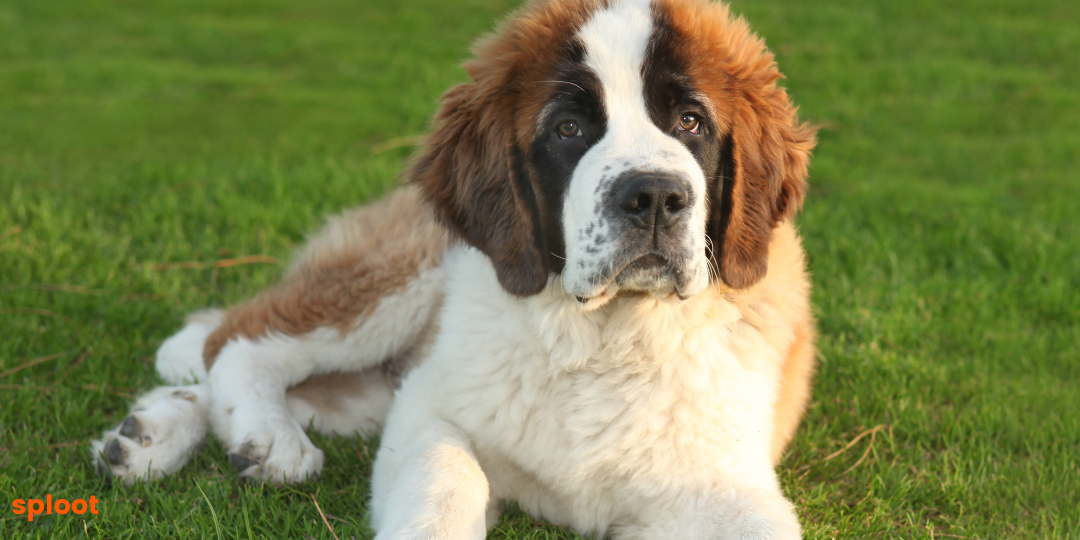Everything a Saint Bernard dog breed parent must know

The Saint Bernard is a gentle giant among dog breeds, renowned for its massive size and an equally big heart. Known for their role in alpine rescue, as well as their calm and friendly temperament, Saint Bernards have captured the hearts of dog lovers around the world. Whether you're considering bringing a Saint Bernard puppy into your home or are simply curious about this impressive breed, this comprehensive guide will cover everything you need to know, from their history and characteristics to care and health concerns.
Historical Background of the Saint Bernard
The Saint Bernard's origins can be traced back to the Swiss Alps, where they were originally bred by monks at the Great St Bernard Hospice, a traveler's refuge on the often treacherous St Bernard Pass. The breed was used for rescue operations in the snowy and icy Alps, famously saving lost travelers trapped by avalanches. Their incredible sense of direction and resistance to cold made them perfect for this job.
Physical Characteristics
Size and Weight
St Bernards are one of the largest dog breeds. Adult males can weigh between 140 to 180 pounds, while females are slightly smaller, typically ranging from 120 to 140 pounds. Regarding height, they can stand from 26 to 30 inches tall at the shoulder.
Appearance
The Saint Bernard is a powerful, muscular dog, renowned for its massive head and imposing stature. They have a deep chest, strong shoulders, and a robust build. The coat can be either smooth or rough, with the smooth coat being close and flat, and the rough coat being slightly longer and more bushy.
Temperament and Personality
Saint Bernards are famous for their kind nature and patience, often referred to as "gentle giants." They are incredibly loyal and friendly, making them excellent family pets. They are particularly good with children and are known for their protective instincts. Their temperament is calm and gentle, but they also have a playful side, enjoying playful interactions and activities with their family.

Training and Socialization
Despite their size, Saint Bernards are generally easy to train due to their eagerness to please their owners. Early socialization and obedience training are crucial to manage a dog of this size properly. They respond well to positive reinforcement techniques such as treats and praises. Training should start from puppyhood to ensure they grow up to be well-mannered and sociable.
Health and Lifespan
The average lifespan of a Saint Bernard is between 8 to 10 years, which is relatively short due to their large size. They are prone to specific health issues, including:
- Hip Dysplasia: A common condition in large breeds, where the thigh bone doesn't fit snugly into the hip joint.
- Elbow Dysplasia: Similar to hip dysplasia but affects the elbow joint.
- Heart Conditions: Including dilated cardiomyopathy, which is prevalent in the breed.
- Bloat: A life-threatening condition where the stomach distends and may twist.
Proactive care, including regular vet visits and monitoring for signs of distress, can help manage these issues.
Care and Maintenance
Exercise
While Saint Bernards do not require as much exercise as some other breeds, they still need regular, moderate exercise to maintain their health and happiness. Daily walks and play sessions are essential, but it's important to avoid strenuous activity, especially in hot weather, due to their thick coats.
Grooming
Saint Bernards shed heavily, particularly during the spring and fall. Regular brushing (several times a week) is necessary to keep shedding under control and to prevent matting, especially in those with longer coats. They should also be bathed regularly but not so frequently as to dry out their skin.

Nutritional Needs
Due to their size, Saint Bernards require a significant amount of food. However, it's crucial to monitor their intake and ensure they maintain a healthy weight to avoid putting extra strain on their joints and heart. High-quality, age-appropriate dog food is recommended, and feeding should be divided into two meals per day to reduce the risk of bloat.
Is a Saint Bernard Right for You?
Owning a Saint Bernard is a considerable commitment, not just because of their size but also due to their potential health issues and short lifespan. They require adequate space to move around and can be expensive to feed and care for. However, their affectionate nature and calm demeanor make them wonderful pets for families with sufficient space and the resources to properly care for them.
In summary, the Saint Bernard is a majestic breed that embodies kindness, strength, and loyalty. If you can accommodate their needs, they make unparalleled companions, famous not just for their size but for their warm, gentle hearts. Whether nestled in a snowy mountain lodge or sprawling comfortably in a family living room, the Saint Bernard truly is a breed apart.

